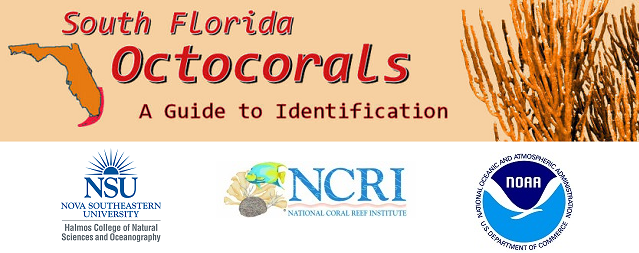Preview

Family
Plexauridae
Common Name(s)
Spindled plexaurella, Spindled sea rod
Colony Form
Colonies bushy, branching from near the base.
Axis
Extensively mineralized by high-Mg calcite like other members of the genus; up to 75% mineral aggregate at branch tips (Lewis et al. 1992).
Branches
Thin, dichotomous; terminal branches moderately or very long; 8-10.5 mm across.
Apertures
Slit-like; calices well separated, with slightly elevated margins or smooth.
Mucus
None
Color
Light brown, yellowish brown, or grey.
Sclerites
Polyp armature: small flat rods 0.05-0.07 mm long. Axial layer: irregular spindles, crosses, 6-radiates often with two longer rays. Middle layer: 4-radiate butterflies, triradiates and spindles, 0.3-0.4 mm long. Surface layer: numerous capstans with two longer rays, chiefly 0.1-0.15 mm long.
Habitat
Common on shallow patch reefs and inshore, also abundant on some deeper reefs (20- 25 m).
Distribution
South Florida, Bermuda and throughout the Caribbean Sea.
Similar Species
Date Taken
4-11-2016



Notes
Resembles P. nutans but more profusely branched with more slender branches. Most of the spicules of the middle cortex are quadriradiate, triradiate, or spindles about 0.3-0.4 mm (Bayer 1961). Preyed upon by the generalist octocoral predatory snailCyphoma gibbosum, but also by Cyphoma signatum, a specialist predator on Plexaurella spp. (Ruesink and Harvell 1990).